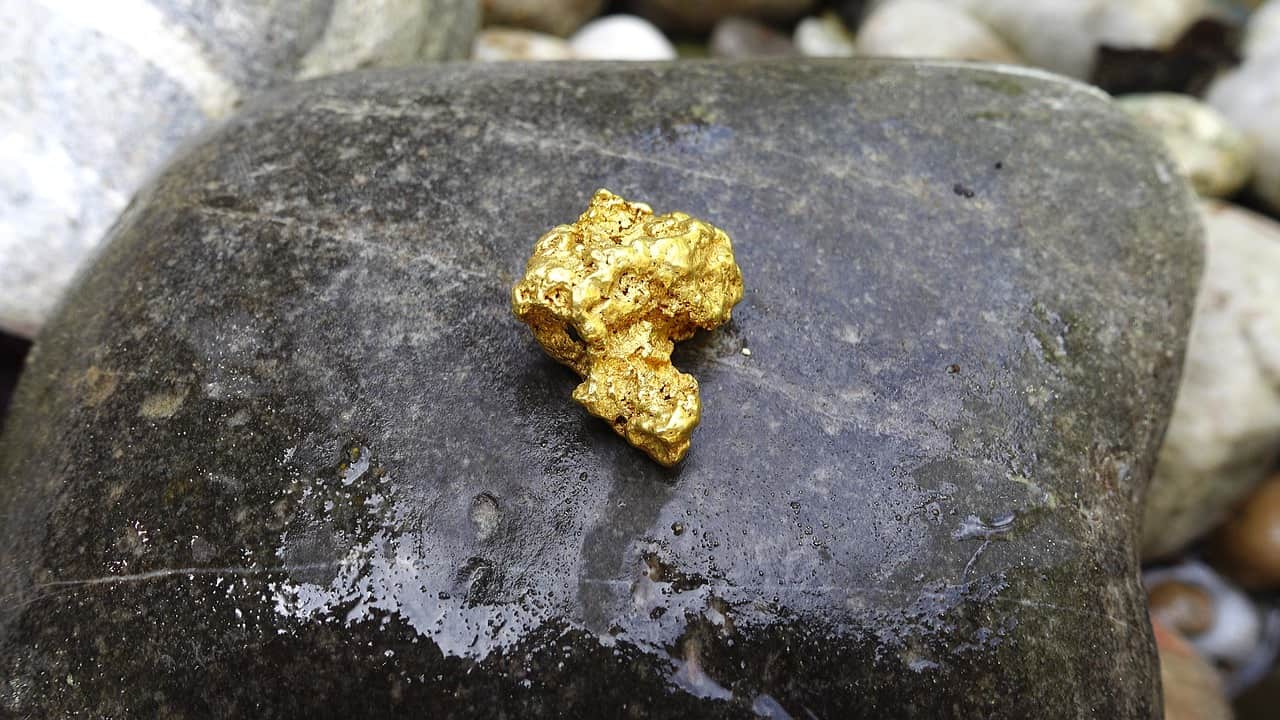Gold nuggets are large amounts of naturally occurring natural gold found in alluvial sediments. Often they are concentrated by waterways and extracted by sand mining. In another example, gold nuggets are found in piles of debris where mining was previously carried out.
The two gold nuggets are considered to be the largest gold nuggets ever discovered. These are the “Welcome Stranger” and the “Hand of Faith”. However, any “biggest” title is better suited.
Welcome Stranger Gold Nugget:
The exact difference between these gold nuggets is “the largest alluvial gold nugget ever found”. It was discovered on February 5, 1869 in the small town of Moliagul in Victoria, Australia, about 60 kilometers west of the city of Bendigo. The explorers John Deason and Richard Oates discovered a nugget, sometimes called the Black Leaf, on a slope just a few centimeters below the surface.
The recording includes the following details about the Welcome Stranger:
• Gross Weight: 3,523.5 troy ounces (241.61 lbs)
• Trimmed Weight: 2,520 troy ounces (172.8 lbs)
• Net weight: 2,315.5 troy ounces (158.78 lbs)
• Dimensions: 2 feet (0.61 meters) x 1.02 feet (0.31 meters)
For their discovery, Deason and Oats received approximately £ 19,068 from London Chartered Bank (in the town of Dunolly, Victoria), which is where they received the nuggets.
Welcome Stranger doesn't exist anymore, but of course the money for it exists. There are also two replicas of the nugget. One owns the descendants of John Deason and the other is in the City Museum on Treasury Place in Melbourne.
Hand of Faith Gold Nugget:
In fact, there are two differences between this gold nugget: the “largest gold nugget found in a metal detector” and the “largest gold nugget currently in existence”. It was discovered on September 26, 1980 near the small town of Kingower in Victoria, Australia.
Kevin Hillier, the discoverer of the nugget, was assisted in this valuable discovery by a metal detector. Hillier discovered that in a vertical position, the nugget was just a foot below the surface of the water.
The Hand of Faith weighs 874.82 troy ounces (60 lbs) and measures 0.47 meters by 0.20 meters by 0.09 meters (0.30 feet). The Golden Nugget Casino in Las Vegas, Nevada is currently home to Nuggets. The sales price is said to have been around $ 1 million.
Gold nuggets are not actually made of pure 24K gold. A safer estimate is that they will be somewhere between 20K and 23K. Those found in Australia are often purer than those in Alaska. The color of the nugget often gives an indication of the purity of its gold content. Nuggets with a very dark orange / yellow color should have a higher gold content than light ones.
There is also a system called “Mireshimaru Fineness”. It is used to represent the purity of gold alloys (also silver and platinum alloys) at 1000 ppm pure metal in the alloy. For example, a 91.6% gold nugget would display as “916 Fine”. This fineness corresponds to 22K.

